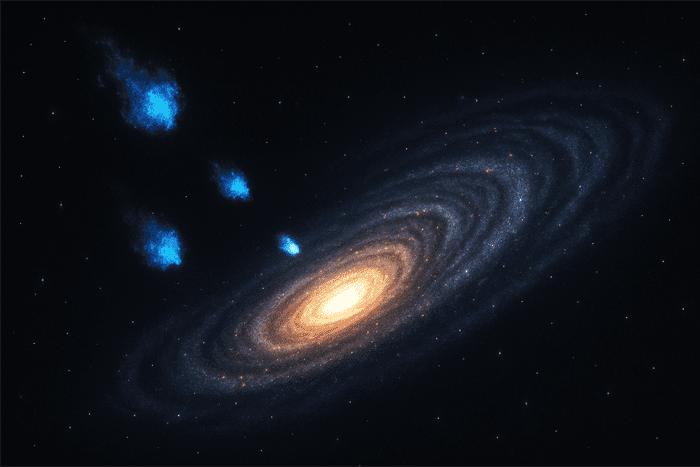Discovery of inflowing molecular gases from outside the galaxy that help to form stars detailed in The Astrophysical Journal
A new result from the molecular gas survey in the Southern Pinwheel Galaxy M83 using the Atacama Large Millimeter/submillimeter Array (ALMA) Telescope reveals a discovery of 10 high-velocity clouds composed of molecular gas, moving at velocities significantly different from M83’s overall rotation, an indication that the influx of these gases – which help to form stars – are from outside the galaxy.
This survey is led by Jin Koda, Professor in the Department of Physics and Astronomy in the College of Arts and Sciences at Stony Brook University, who collaborated with Maki Nagata and Fumi Egusa, of the University of Tokyo, as well as an international team of astrophysicists. Their findings are published in The Astrophysical Journal.
Galaxies are primarily composed of stars and gas, with gas serving as the material for forming new stars. Through this process of star formation, galaxiesevolve by converting gas into stars. It is estimated that without a supply of gas from external sources, the existing gas in a galaxy would be consumed within about one billion years and star formation would cease. The team’s finding on the molecular composition of M83 provides new insight into how galaxies may evolve over millions and billions of years.
Professor Koda’s team is conducting a comprehensive study of molecular gas using new data from ALMA about M83.
“This galaxy resembles our own Milky Way, therefore findings there may also provide clues into star formation and galaxy evolution in the Milky Way,” says Koda.
“We analyzed high-sensitivity molecular gas emission line data obtained by ALMA. This led to the discovery of the 10 high-velocity clouds composed, unusually, of molecular gas,” explains Nagata, a graduate student at the University of Tokyo.
“Most of these clouds do not correspond to any known supernova remnants in M83,” adds Koda.
Egusa, Associate Professor in the Institute of Astronomy at the University of Tokyo, suggests two main scenarios for the existence of these molecular gas clouds present in M83. One is that they are gas clouds directly accreted from outside the galaxy, and the other is that they are gas ejected by supernova explosions within the galaxy that later fall back due to gravity.
“Even if they were accelerated by supernova explosions, their kinetic energies are too high to be explained by a single event,” Koda points out.
“These features strongly suggest that many of the observed high-velocity clouds must be flowing into M83 from external sources,” Nagata explains.
According to the authors, this study provides the first systematic investigation of high-velocity molecular clouds in nearby galaxies.
They will continue this research and investigate how the molecular gas forms outside the galaxy.
The research is supported in part by the National Science Foundation (NSF), NSF grant numbers 2006600 and 2406608.





